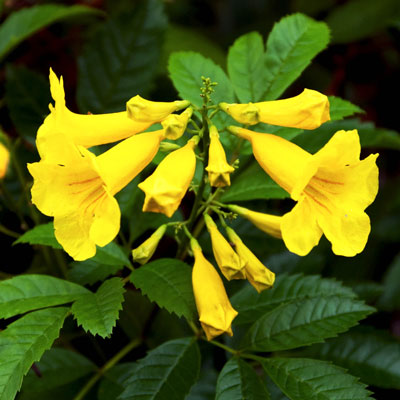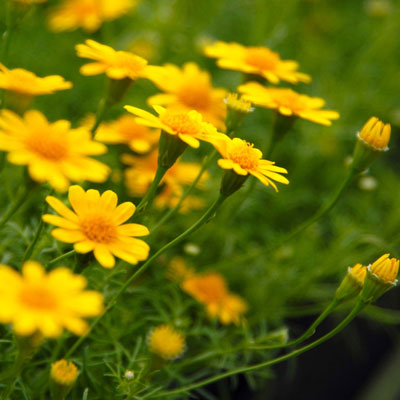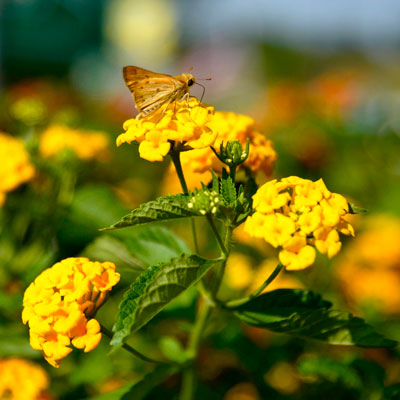Bright rays of sunshine
If the homework assignment is for yellow in the late summer garden, here’s a collection that’s sure to please. Best of all, these will meld in with your fall colors as well.

• Gold Star Esperanza. Native to Southwest Texas, this is actually a selection chosen by our friend Greg Grant because of its early and steady blooming habit. The plant grows to 4 to 6 feet tall and wide in North Texas, and twice that in areas with warmer winters where it can be grown as a woody perennial. It sports refreshing, buttery yellow flowers that have made it one of the most popular new plant introductions of the past 25 years.

• Dahlberg daisy. This plant is like the ballplayer who retires after 22 seasons – one who was never an All Star, but always a dependable performer. The plants grow to be 10 or 12 inches tall and 12 to 15 inches wide. That means they’ll need to be at, or near the edge of the flower garden. It also means you can use one or two around the outside of a large patio pot – somewhere between a “filler” and a “spiller” plant, to use the current jargon. Its foliage is very fine-textured, and it has an unusual (not unpleasant) fragrance. The wispy little yellow daisies are produced month-after-month.

• New Gold lantana. Our most resilient summer flower for sun, this longtime North Texas favorite produces thousands of blooms during each growing season. It will reach 12 to 15 inches tall, and it’s best used massed in beds as a tall, sprawling plant for the foreground. It’s perennial in South Texas coming back from its roots each spring. In North Texas odds are you’ll need to replant it unless you use it in a protected location. It’s triploid, meaning that it is sterile. Not setting seeds keeps it in bloom continuously, while other lantanas may tend to cycle in and out of flower as they take time to produce fruit. Hummingbirds and butterflies head toward it all season long.

• Marguerite sweet potato. Compared to some of the plants in our list, this one is mainstream. It was one of the first light green selections. There now are several others. The vines sprawl to cover several square feet. They’re nice in contrast with red-leafed begonias, coleus, and other selections of ornamental sweet potatoes. These vines grow rapidly. Start earlier next year, although you still have time to enjoy them this season.
• Variegated tapioca. This one will be harder to find, but no yellow-leafed plant will offer any more unusual color. This thing is amazing, and it grows to 5 or 6 ft. tall and 3 or 4 ft. wide, all in a single season. Use it in the back of your floral garden, or in a large pot behind other container plants. Position it alongside purple-leafed plants for the most dazzling displays. As examples, consider partnering it with large-leafed red coleus plants, purpleheart, purple basil, or purple fountaingrass. And, the tapioca’s colors will intensity as weather turns cooler in a couple of months.

